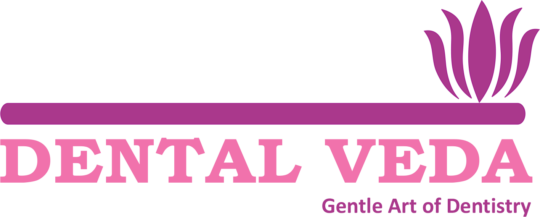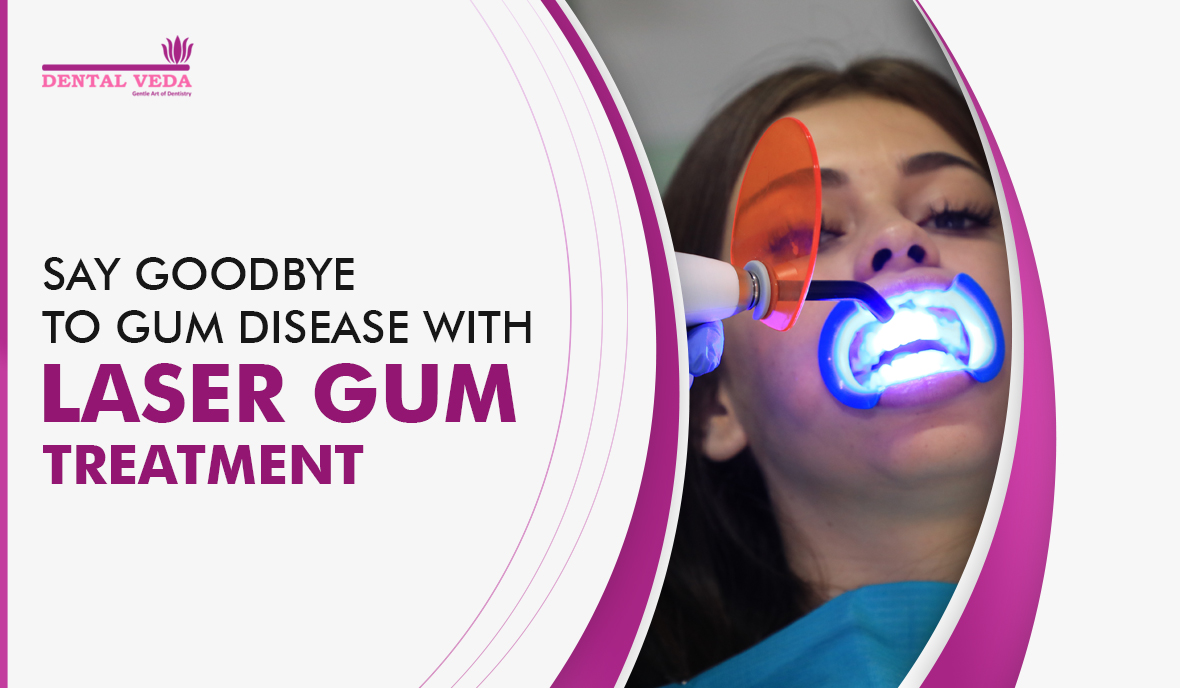Gum disease, also known as periodontal disease, is a common oral health condition characterized by inflammation of the gums and damage to the tissues supporting the teeth. It begins with the buildup of plaque, a sticky film of bacteria, on the teeth, which, if left untreated, can lead to gum inflammation (gingivitis) and progress to more severe forms of periodontal disease.
Traditional treatment methods for gum disease typically involve deep cleaning procedures such as scaling and root planing, antibiotics, and, in severe cases, surgical interventions like gum flap surgery or bone grafting. While these treatments can be effective, they may also be associated with discomfort, longer recovery times, and potential risks.
Introduction to Laser Gum Treatment
Laser gum treatment represents an innovative and minimally invasive approach to treating gum disease. It utilizes advanced laser technology to target and remove diseased gum tissue, bacteria, and calculus buildup while promoting healthy gum tissue regeneration.
Understanding Laser Gum Treatment
-
Explanation of the Procedure:
During laser gum treatment, a dental professional uses a specialized dental laser to access and remove inflamed gum tissue and bacteria from around the teeth and beneath the gum line. The laser energy also helps to seal blood vessels, reducing bleeding during the procedure.
-
How Laser Technology Works in Treating Gum Disease:
The laser emits a concentrated beam of light energy that is absorbed by pigmented bacteria and damaged tissue, causing them to break down and vaporize. This targeted approach allows for precise treatment of diseased areas while leaving healthy tissue unharmed.
-
Comparison with Traditional Treatment Methods:
Compared to traditional treatment methods, laser gum treatment offers several advantages. It is less invasive, resulting in minimal discomfort and shorter recovery times. Additionally, the laser precision allows for more accurate removal of diseased tissue, reducing the risk of damage to surrounding structures.
-
Safety Considerations and Benefits:
Laser gum treatment is considered safe when performed by a trained and experienced dental professional. It offers numerous benefits, including reduced bleeding and swelling, less post-operative discomfort, and improved overall outcomes. Additionally, the laser sterilizing effect helps kill bacteria, reducing the risk of infection.
Advantages of Laser Gum Treatment
-
Faster Healing Time:
One of the key advantages of laser gum treatment is its ability to promote faster healing compared to traditional methods. The precise nature of the laser allows for minimal trauma to surrounding tissues, leading to quicker recovery times for patients.
-
Reduced Discomfort During and After the Procedure:
Laser gum treatment is associated with reduced discomfort during and after the procedure. The laser cauterizes blood vessels as it works, resulting in less bleeding and post-operative pain for patients. This makes the treatment more comfortable overall compared to traditional gum surgery.
-
Minimal Bleeding and Swelling:
Another significant advantage of laser gum treatment is the minimal bleeding and swelling patients experience. The laser seals blood vessels as it operates, leading to less bleeding during the procedure and reduced swelling afterward. This not only enhances patient comfort but also accelerates the healing process.
-
Targeted Treatment with Precision:
Laser gum treatment allows for precise, targeted treatment. The laser can selectively remove diseased tissue while leaving healthy tissue intact, resulting in more accurate and effective treatment outcomes. This targeted approach ensures that only the affected areas are treated, minimizing damage to surrounding structures.
Who Can Benefit from Laser Gum Treatment
-
Candidates Suitable for Laser Gum Treatment:
Many patients with gum disease can benefit from laser gum treatment. It is particularly well-suited for individuals with mild to moderate gum disease who are looking for a minimally invasive treatment option. Additionally, patients who prefer a faster recovery time and reduced discomfort may also benefit from laser gum surgery.
-
Considerations for Individuals with Specific Dental Conditions:
While laser gum treatment is suitable for many patients, there are some considerations for individuals with specific dental conditions. For example, patients with severe gum disease or extensive periodontal damage may require additional treatments or alternative approaches. Additionally, individuals with certain medical conditions or taking specific medications may need to consult with their dentist to determine if laser gum treatment is appropriate for them.
-
Alternatives for Those Not Suitable for Laser Treatment:
Alternative treatment options are available for patients who are not suitable candidates for laser gum treatment. Traditional gum surgery, such as scaling and root planing or flap surgery, may be recommended in these cases. Additionally, maintaining good oral hygiene practices and regular dental cleanings can help manage gum disease and prevent its progression in some individuals.
Cost and Considerations
-
Factors Influencing the Cost of Laser Gum Treatment:
The cost of laser gum treatment can vary depending on several factors. These may include the severity of the gum disease, the number of teeth requiring treatment, the experience and expertise of the dentist or periodontist, and the geographic location of the dental practice. Additionally, any additional procedures or follow-up appointments may also influence the overall cost.
-
Comparisons with Traditional Gum Disease Treatment Options:
When comparing the cost of laser gum treatment with traditional gum disease treatment options, it is essential to consider both the upfront costs and the long-term outcomes. While laser gum treatment may have a higher initial cost compared to traditional methods, it often offers advantages such as faster healing times, reduced discomfort, and fewer follow-up appointments. This can lead to potential cost savings in the long run due to reduced post-operative care and fewer complications.
-
Insurance Coverage and Financing Options:
Insurance coverage for laser gum treatment may vary depending on the individual dental insurance plan and the specific terms of coverage. Some dental insurance plans may cover a portion of the cost of laser gum treatment, particularly if it is deemed medically necessary. It is essential for patients to check with their insurance provider to understand their coverage and any out-of-pocket expenses.
Many dental practices offer flexible payment options and financing plans for individuals without dental insurance or those looking to finance their treatment. These may include payment plans with low monthly installments or third-party financing options that allow patients to spread the cost of treatment over time. Additionally, some dental practices may offer discounts or promotions for certain treatments, so it is worth inquiring about any available options. (https://www.sharkclub.com)
Risks and Side Effects
-
Potential Risks Associated with Laser Gum Treatment:
While laser gum treatment is generally considered safe, there are some potential risks associated with the procedure. These may include damage to surrounding tissues if the laser is not used properly, infection, and delayed healing. Additionally, in rare cases, laser gum treatment may lead to tooth sensitivity or changes in gum texture. It is essential for patients to discuss any concerns with their dentist or periodontist before undergoing treatment.
-
Common Side Effects and Their Management:
Common side effects of laser gum treatment may include mild discomfort or soreness, swelling, and minor bleeding immediately following the procedure. These side effects are usually temporary and can be managed with over-the-counter pain medication, ice packs, and maintaining good oral hygiene practices. Patients should follow any post-operative care instructions provided by their dentist or periodontist to minimize discomfort and promote healing.
-
Importance of Choosing a Qualified Dentist or Periodontist:
To minimize the risk of complications and ensure optimal treatment outcomes, it is crucial to choose a qualified and experienced dentist or periodontist for laser gum treatment. Dentists and periodontists specializing in laser dentistry have undergone extensive training and certification to safely and effectively perform these procedures.
Patients should inquire about their dentist experience with laser gum treatment and ask for before-and-after photos or patient testimonials to assess their expertise. By selecting a qualified provider, patients can have peace of mind knowing they are receiving high-quality care and minimizing the risk of potential side effects.
Aftercare and Maintenance
-
Post-treatment Care Instructions:
After undergoing laser gum treatment, patients will receive specific post-treatment care instructions from their dentist or periodontist. These instructions may include guidelines for oral hygiene practices, such as gentle brushing and flossing, as well as recommendations for using antimicrobial mouthwashes to help prevent infection. Patients may also be advised to avoid certain foods and activities that could irritate the treated gums and interfere with the healing process.
-
Tips for Maintaining Gum Health After Laser Treatment:
In addition to following post-treatment care instructions, patients can follow several tips to maintain gum health after laser treatment. These may include adopting a balanced diet rich in vitamins and minerals to support gum tissue regeneration, quitting smoking if applicable, and avoiding excessive alcohol consumption. Regular dental check-ups and cleanings are also essential for monitoring gum health and addressing any potential issues before they escalate.
-
Schedule for Follow-up Appointments and Monitoring:
Following laser gum treatment, patients will typically need to schedule follow-up appointments with their dentist or periodontist to monitor their progress and ensure optimal healing. These appointments may involve a thorough examination of the gums and teeth to assess healing and address any concerns that may arise. Depending on the individual response to treatment, additional follow-up appointments may be scheduled as needed to maintain gum health and prevent the recurrence of gum disease.
Conclusion
Laser gum treatment offers numerous benefits for individuals suffering from gum disease. It provides a minimally invasive alternative to traditional gum surgery, with advantages such as faster healing times, reduced discomfort, and targeted treatment with precision. By addressing the underlying causes of gum disease and promoting gum tissue regeneration, laser gum treatment can help patients achieve improved oral health and overall well-being.
Want a laser gum treatment in Gurgaon? Contact us today; we are the best Dental Clinic in Gurgaon.


